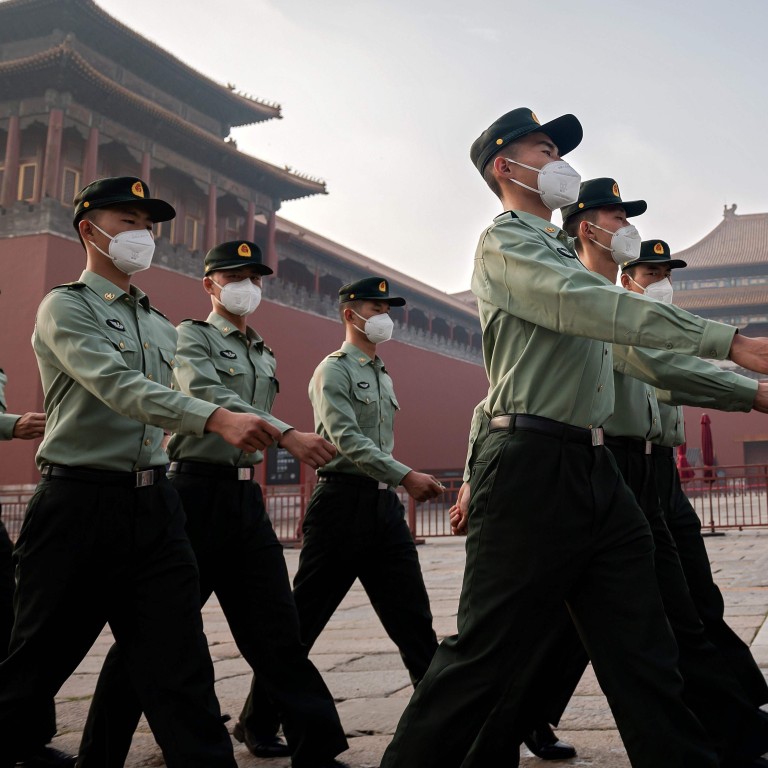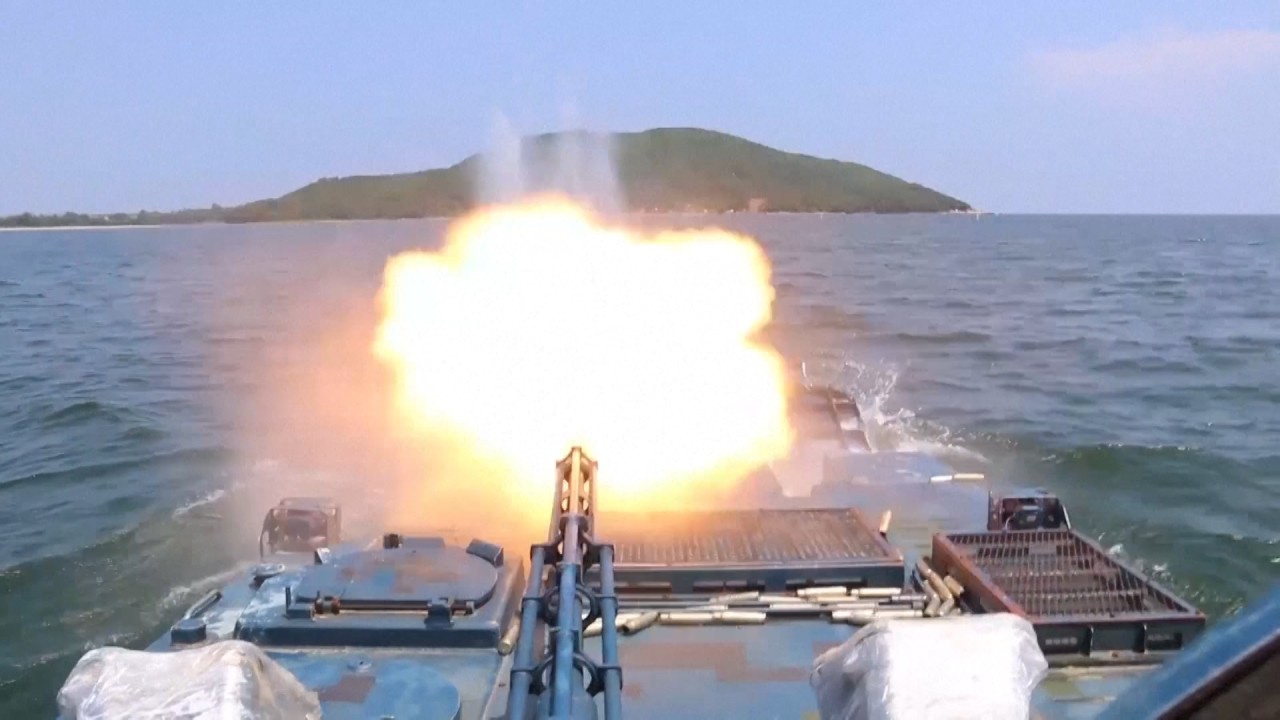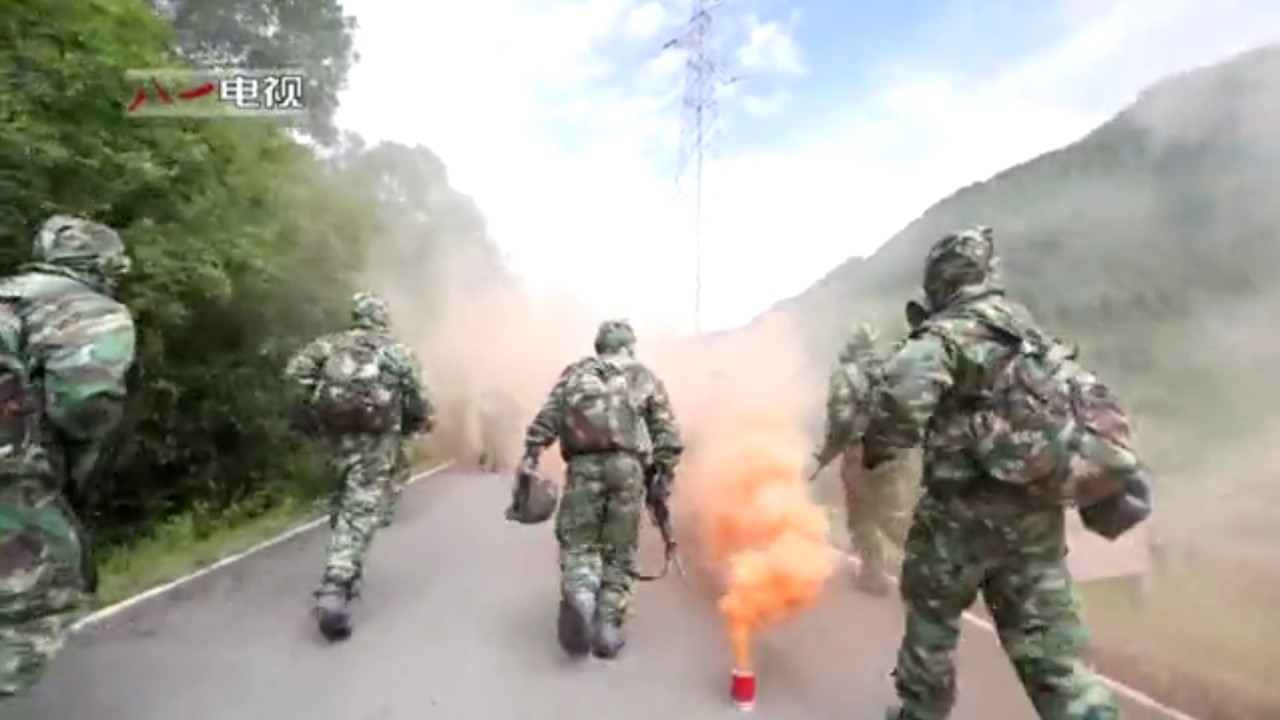
China may outmatch American military in missile development and shipbuilding, says US Defence Department report
- ‘China has already achieved parity with – or even exceeded – the United States in several military modernisation areas,’ says Pentagon
- China is likely to double its nuclear warhead stockpile over the next decade, according to the report
China may have surpassed American military capabilities in the area of missile development and shipbuilding, and is likely to double its nuclear warhead stockpile over the next decade, the US Defence Department said in an annual report to US lawmakers.
“China has already achieved parity with – or even exceeded – the United States in several military modernisation areas,” including shipbuilding, land-based conventional ballistic and cruise missiles, and integrated air defence systems, said the report, which was made public on Tuesday.
China’s People’s Liberation Army (PLA) has more than 1,250 ground-launched ballistic missiles (GLBMs) and ground-launched cruise missiles (GLCMs) with ranges of up to 5,500km (3,400 miles), compared with the US military’s single type of conventional GLBM, which is limited to a range of 70km to 300km (43 to 186 miles), and no GLCMs, according to the report.
China had developed its conventional missile forces unrestrained by any international agreements, the report said. The country also has “one of the world’s largest forces of advanced long-range surface-to-air systems – including Russian-built S-400s, S-300s, and domestically produced systems”.

01:21
Chinese amphibious armoured troops conduct live-fire military exercise at sea
“Over the next decade, China’s nuclear warhead stockpile – currently estimated to be in the low 200s – is projected to at least double in size as China expands and modernises its nuclear forces,” the report said, adding that the goal is a “nuclear triad” with the development of a nuclear capable air-launched ballistic missile, while improving ground and sea-based nuclear capabilities.
Overall, the report, known informally as the “China Military Power Report”, portrays the rapid development of China’s armed forces as part of its government’s plan to achieve a “great rejuvenation of the Chinese nation” by 2049 and “revise the international order”.
The Pentagon noted the progress in China’s military had made since its first annual report to Congress in 2000, which assessed China’s “armed forces at that time to be a sizeable but mostly archaic military that was poorly suited to the [Chinese Communist Party’s] long-term ambitions”.
The latest edition “reflects the growing concern that the Trump administration has about the [Chinese Communist Party’s] ambitions for the PLA and rapidly developing PLA capabilities,” said Bonnie Glaser, a China analyst with the Centre for Strategic and International Studies.
Deputy Assistant Secretary of Defence Chad Sbragia delivered a presentation about the report, hosted by the Washington-based think tank American Enterprise Institute on Tuesday.
China’s missile systems “have our full attention, as you might imagine,” he said.
Chinese military mounts another show of force in Bohai and Yellow seas
In putting the report together, Sbragia said the Pentagon sought to use Chinese military and Communist Party documents whenever possible at the same time it worked to filter out party rhetoric that can be distracting to American audiences and cause them to underappreciate China’s very ambitious plans.
“The report does not claim that China’s military is currently 10 feet tall, nor, I think, certainly does China either,” said Sbragia. “It clearly faces a number of challenges, and Beijing is working to overcome those, which is really an important point.”
“It is likely that China will seek to build a military that is equal to or in some cases superior to the US military or the military of any great power that China perceives as a potential threat,” added Sbragia, a former US Marine attaché with Washington’s embassy in Beijing.
A major concern highlighted in the report is the increase in Chinese ground, air and naval forces available in the event of an invasion or armed conflict with Taiwan, which according to the report was 3-1 last year in favour of China but is now closer to 5-1, or even 12-1 if China’s forces in the wider region are factored in.

03:12
China’s military launches a drill on nuclear emergency rescue operations
Sbragia said these increasingly asymmetric numbers continued to shape US strategy and moves to reform the Pentagon’s own operations. “It certainly drives us,” he said, adding that it’s a “motivating aspect of work” in Washington that is not lost on the Chinese.
“The worst case scenario is conflict and that’s not where anyone wants to go,” Sbragia said.
The Pentagon report follows a series of pronouncements by members of President Donald Trump’s administration pledging to counter China’s military operations in the South China Sea and near the self-governing island of Taiwan, which Beijing considers to be a renegade province.
Why China brought out the ‘aircraft-carrier killer’ to flex its muscle
In Beijing, a defence ministry spokesman dismissed the report, saying it misrepresented Beijing’s “defence policy and military strategy”.
“The report is filled with ... cold war thinking ... aiming to vilify the modernisation of the Chinese military, defence spending and nuclear weapons policies,” the spokesman said.
“Its purpose is to incite confrontation between the mainland and Taiwan, and exacerbate tensions across the Taiwan Strait,” he said, adding that Beijing might respond further, depending on circumstances.
Tuesday’s report touched on theft of US research that could potentially help China modernise its military, a concern that has become a top priority across departments in Washington, and which prompted the US Justice Department to launch its “China Initiative” in 2018. That effort provided more resources aimed at countering such activity, and has resulted in a string of indictments against Chinese nationals in the US.
Last month, Wang Xin, a researcher at University of California, San Francisco, pleaded not guilty to charges that he attempted to hide his status as an active member of China’s PLA. Wang was detained in June while preparing to depart from Los Angeles International Airport on a flight to Tianjin.
Another case came to light last week when the Justice Department announced the arrest of Guan Lei, who was not allowed to board a flight to China and after he refused an FBI request to examine his computer. According to the complaint, Guan is being investigated for possibly transferring sensitive US software or technical data to China’s National University of Defence Technology.
Chinese researcher Wang Xin pleads not guilty to visa fraud charge
Sbragia, who studied Mandarin at Beijing’s Capital Normal University earlier in his career, said the departments of State, Defence and Justice, among others, are trying to find a balance, ensuring that US research organisations and universities operate effectively even as their activities are monitored so that any access does not jeopardise US security.
“I tell you, we’re all over it,” he said. “For a long time, it’s not necessarily that we didn’t know these things were going on, we just weren’t necessarily taking specific action.”
The Pentagon report also detailed the extent to which the PLA may be planning to build a network of military logistics bases overseas.
“Beyond its current base in Djibouti, the PRC is very likely already considering and planning for additional overseas military logistics facilities to support naval, air, and ground forces,” according to the report.
China has “likely considered” building such bases in Myanmar, Thailand, Singapore, Indonesia, Pakistan, Sri Lanka, United Arab Emirates, Kenya, Seychelles, Tanzania, Angola and Tajikistan, it said.


